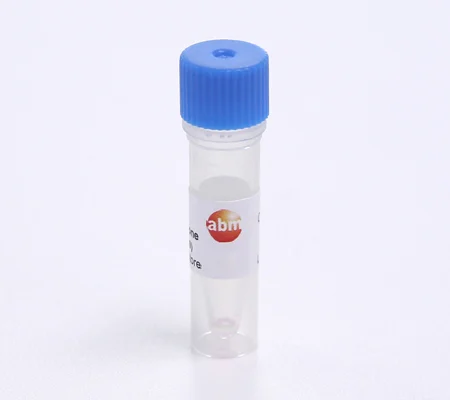
EOS Lentiviral Vector (PL-SIN-EOS-C(3)-EiP)

| CAT.NO | UNIT |
|---|---|
| LV028858 | 1.0 µg DNA |
| SKU | LV028858 |
|---|---|
| iPSCS Factor Type | Lentiviral Vector |
| iPSC Factor | EOS |
| Vector Map | PL-SIN-EOS-C(3)-EiP |
| Vector Size | 8482 |
| Storage Condition | 1 year when stored at -20°C or lower in a non-frost free freezer |
| Unit quantity | 1.0 µg DNA |
Supporting Protocol
MSDS
QC
Other
What is the transfection efficiency for the minicircles?
Minicircles have lower transfection efficiency than infection with viral particles. However, minicircles are safer for the cells because they do not have additional non-coding components.
What volume and concentration is the minicircle DNA provided at?
Minicircle DNA products are provided as 100ug DNA at 0.5ug/ul concentration (200 ul total volume).
What is the difference in promoters between LV028873 and LV028874?
LV028873 PL-SIN-EOS-C(3+)-EiP Lentivirus Includes C(3+), trimer of CR4 enhancer LV028874 PL-SIN-EOS-S(4+)-EiP Lentivirus Includes S(4+), tetramer of SRR2 enhancer
Do you offer a protocol for iPSC generation using episomal plasmids?
There are several papers referencing a number of methods of iPSC generation, these have been included below for more information. Further to this, we can offer no standard protocol for using these plasmids, and this will need to be optimized and determined by the end user in all cases. 1. Liao J, Wu Z, Wang Y, et al. Enhanced efficiency of generating induced pluripotent stem (iPS) cells from human somatic cells by a combination of six transcription factors. Cell Res. 2008;18:600-603. 2. Dowey SN, Huang X, Chou BK, et al. Generation of integration-free human induced pluripotent stem cells from postnatal blood mononuclear cells by plasmid vector expression. Nat Protoc. 2012;7:2013-2021. 3. Meng X, Neises A, Su R-J, et al. Efficient Reprogramming of Human Cord Blood CD34+ Cells Into Induced Pluripotent Stem Cells With OCT4 and SOX2 Alone. Mol Ther. 2012;20:408-416. 4. Su R-J, Baylink DJ, Neises A, et al. Efficient Generation of Integration-Free iPS Cells from Human Adult Peripheral Blood Using BCL-XL Together with Yamanaka Factors. PLoS One. 2013;8:e64496. 5. Okita K, Yamakawa T, Matsumura Y, et al. An efficient nonviral method to generate integration-free human-induced pluripotent stem cells from cord blood and peripheral blood cells. Stem Cells. 2013;31:458-466.
Can I amplify these episomal vectors?
All commonly used bacterial strains (such as DH5alpha) can be used to propagate these plasmids, please also review the vector information/map for the corresponding resistance marker.
There are no references for this product yet!


